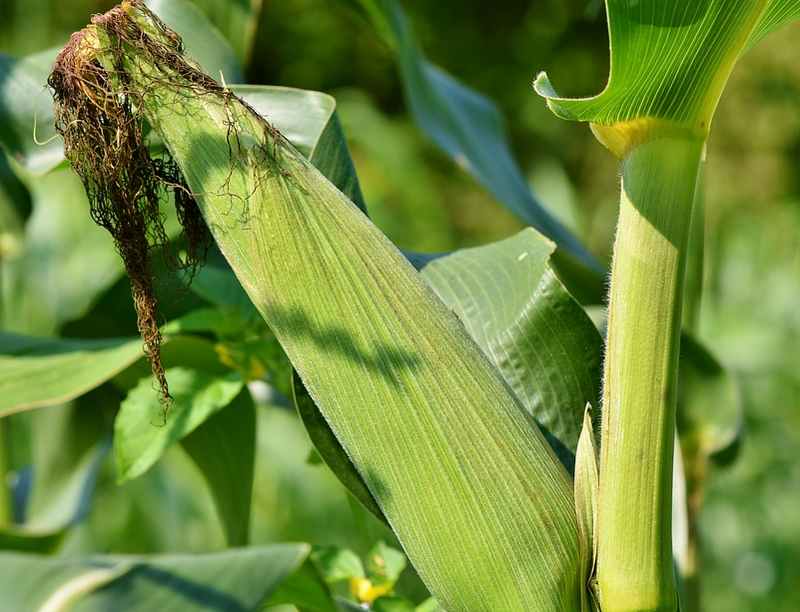Effect of cercospora spot and yield on maize cultivars in no-tillage system
DOI:
https://doi.org/10.20873/jbb.uft.cemaf.v2n3.motasantosKeywords:
Zea mays L., nitrogen fertilization, plant diseasesAbstract
The incidence of attack of the pathogen that transmits gray leaf spot has increased in recent years in the corn producing areas, mainly influenced by successive planting corn after corn, but also by cultivating in late summer, a fact of great importance to promote the increase of the disease. The impact of the disease in the crop is raised to the fact that much of the pathogen colonizes leaf tissue, diminishing the photosynthetic tissue, leading to premature senescence and, consequently, reducing the yield. The research objective this work was to identify the reaction of cultivars to spot the Cercospora and its effect on grain yield of maize. The study was conducted in Coimbra - MG, no-tillage in reduced spacing and population of 83,000 plants ha-1. We evaluated the incidence of diseases and grain yield in eight maize cultivars. In the general context, it is concluded that the incidence of cercospora was not influenced by the high plant population and not by the spacing between rows; already obtained more cultivar P 3041 yield.
References
Agroceres. (1996), Guia Agroceres de sanidade. São Paulo: Sementes Agroceres, 72p.
Brito, A. H. de.; Von Pinho, R. G.; Pozza, E. A.; Pereira, J. L. A. R.; Faria Filho, E. M. (2007), Efeito da cercosporiose no rendimento de híbridos comerciais de milho. Fitopatologia Brasileira, 32, 18-25.
Brito, A. H. de.; Von Pinho, R. G.; Souza Filho, A. X.; Altoé, T. F. (2008) Avaliação da severidade da cercosporiose erendimento de grãos em híbridos comerciais de milho. Revista Brasileira de Milho e Sorgo, 7, 19-31.
Carson, M. L.; Goodman, M. M.; Williamson, S. M. (2002), Variation in aggressiveness among isolates of Cercospora from maize as a potential cause of genotype-environment interaction in gray leaf spot trials. Plant Disease, 86, 1089- 1093.
Casela, C. R. e Ferreira, A. S. (2003), A cercosporiose na cultura do milho - Circular Técnica 24, Sete Lagoas, MG.
Casela, C. R.; Ferreira, A. S.; Pinto, N. F. J. A. (2006), Doenças na cultura do milho - Circular Técnica 83, Sete Lagoas, MG.
Pinto, N. F. J. A.; Angelis, B.; Habe, M. H. (2004), Avaliação da eficiência de fungicidas no controle da cercosporiose (Cercospora zeae-maydis) na cultura do milho. Revista Brasileira de Milho e Sorgo, 3, 139-145.
EMPRESA BRASILEIRA DE PESQUISA AGROPECUÁRIA - EMBRAPA. (2006), Centro Nacional de Pesquisa de Solos. Sistema brasileiro de classificação de solos. Rio de Janeiro, 306p.
Ribeiro Júnior, J. I. (2001), Análises estatísticas no SAEG. Ed. Viçosa, UFV, 301p.
Sawazaki, E.; Dudienas, C.; Paterniani, M. E. A. G. Z.; Galvão, J. C. C.; Castro, J. L.; Pereira, J. (1997), Reação de cultivares de milho à mancha de Phaeosphaeria no Estado de São Paulo. Pesquisa Agropecuária Brasileira, 32, 585-589.
Forsthofer et al. Desempenho agronômico e econômico do milho em diferentes níveis de manejo e épocas de semeadura. Pesquisa Agropecuária Brasileira, Brasília, v.41, n.3, p.399-407, mar. 2006
Prado, R. M. e Goulart Filho, L. R. Desempenho em semeadura tardia em vinte híbridos de milho em areia quartzosa do cerrado do triângulo mineiro. Revista de Agricultura, 75, Piracicaba, fascículo 1, 2000.

Published
How to Cite
Issue
Section
License
Copyright (c) 2024 - Journal of Biotechnology and Biodiversity

This work is licensed under a Creative Commons Attribution 4.0 International License.
Authors who publish with this journal agree to the following terms:
Authors retain copyright and grant the journal right of first publication with the work simultaneously licensed under a Creative Commons Attribution License (CC BY 4.0 at http://creativecommons.org/licenses/by/4.0/) that allows others to share the work with an acknowledgement of the work's authorship and initial publication in this journal.
Authors are able to enter into separate, additional contractual arrangements for the non-exclusive distribution of the journal's published version of the work (e.g., post it to an institutional repository or publish it in a book), with an acknowledgement of its initial publication in this journal.
Authors are permitted and encouraged to post their work online (e.g. in institutional repositories or on their website) prior to and during the submission process, as it can lead to productive exchanges, as well as earlier and greater citation of published work (Available at The Effect of Open Access, at http://opcit.eprints.org/oacitation-biblio.html).


